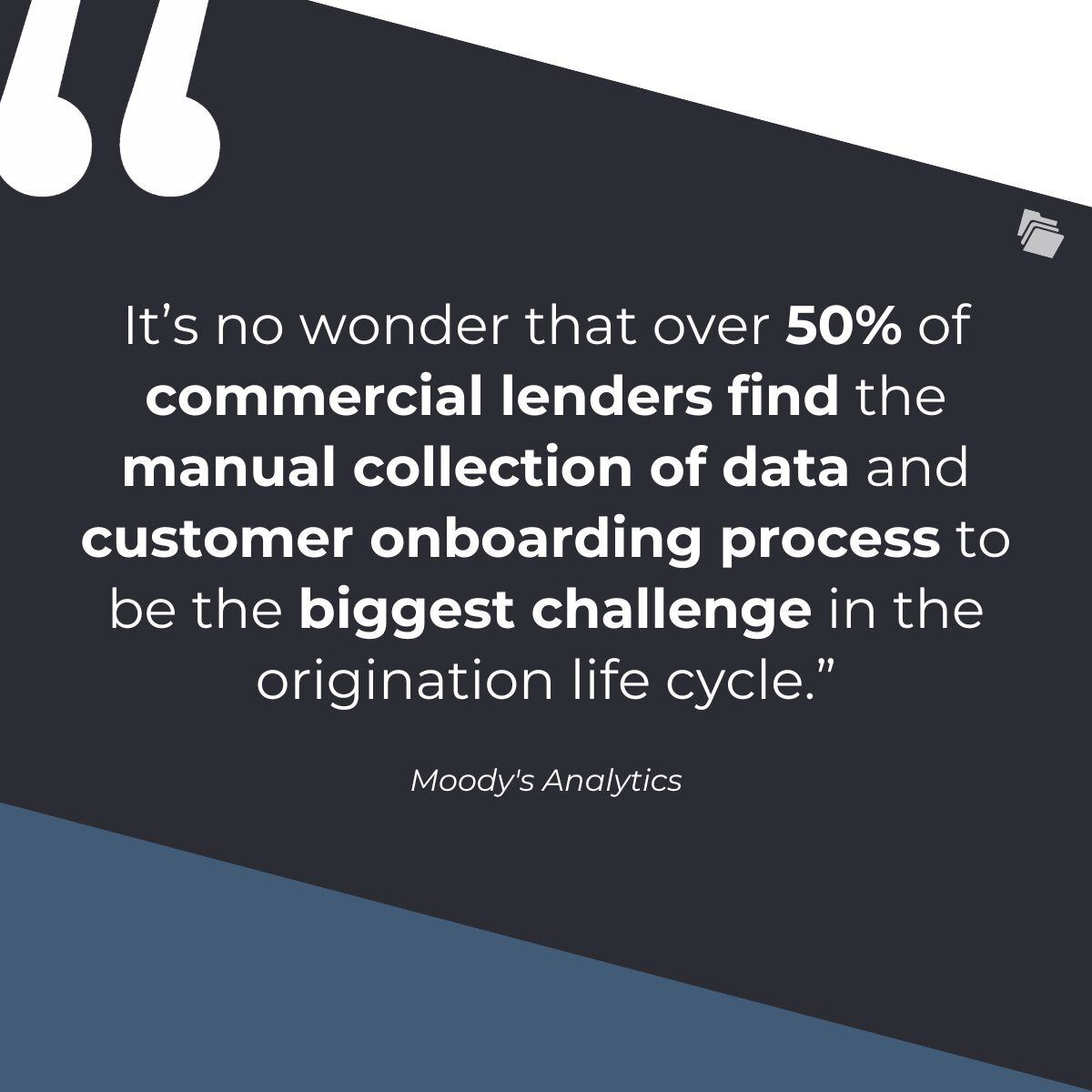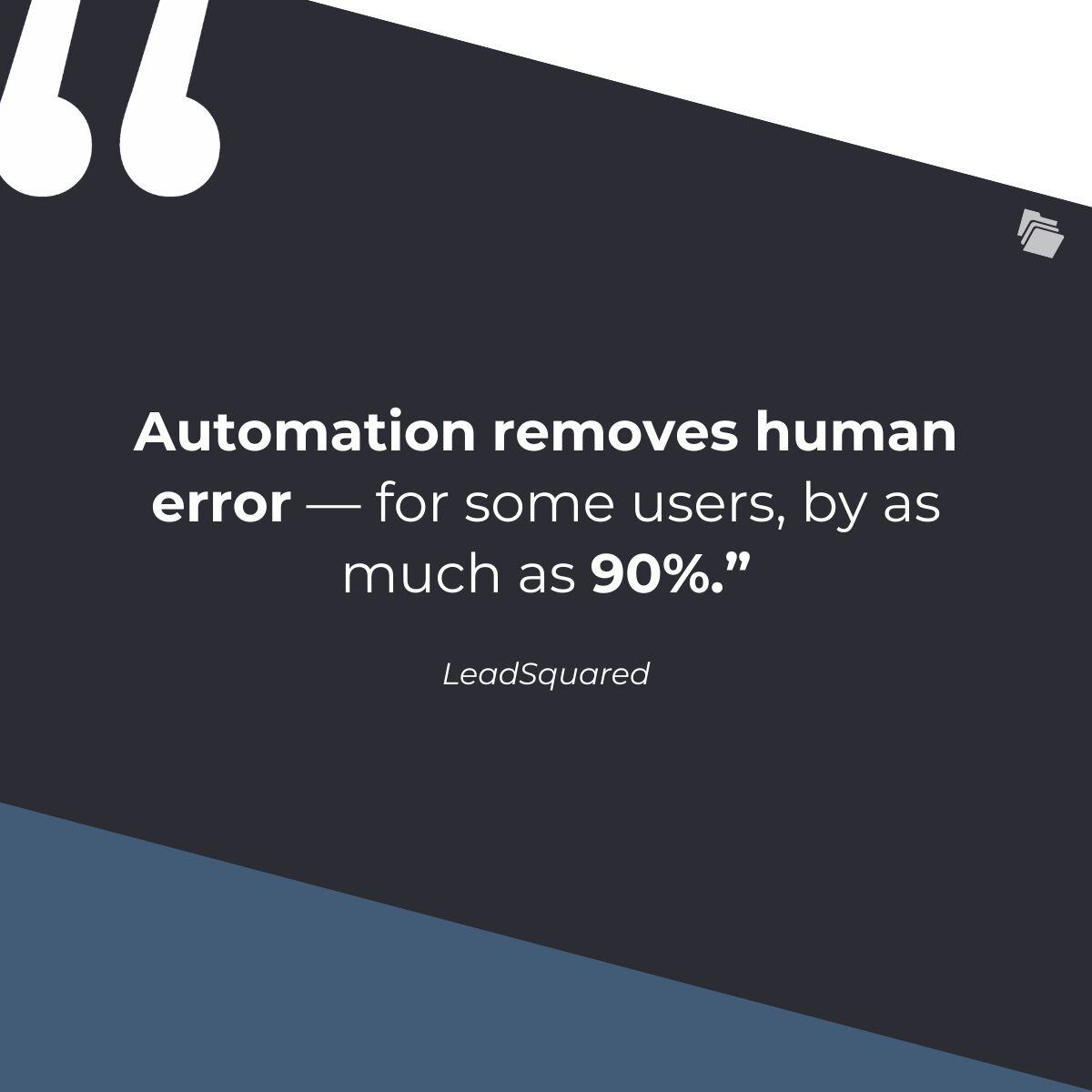The commercial loan origination process is your first opportunity to establish a relationship with your customer.
For new customers, this process may be overwhelming — not only must the customer provide extensive information, but the user interface experience with legacy origination programs can be cumbersome. That’s nothing compared to the redundancies and inconsistencies faced by commercial lenders who themselves usually enter and assess data manually.
Automating the loan origination process is the solution. Through loan origination automation, commercial lenders can improve their ability to analyze customer profiles efficiently, spur revenue growth, and improve the customer experience.
The Loan Origination Process
The loan origination process can be time-consuming and unwieldy for commercial lenders as well. In one recent poll of bankers, 50% of respondents stated that they used no automation software. This means that they must manually enter and review customer data across multiple platforms to analyze the customer’s creditworthiness and risk profile.
Because the commercial loan origination process introduces the lender to the customer, the origination process requires the customer to produce extensive documentation and the lender to perform an intensive analysis. It’s no wonder that over 50% of commercial lenders find the manual collection of data and customer onboarding process to be the biggest challenge in the origination life cycle.

The origination process typically includes the following steps. Commercial lenders can incorporate automation software at each point.
1. Establishing Customer Relationship
The first step in the origination process is establishing (or strengthening) a relationship with the prospective customer. No matter your history with the customer, originating a new loan requires you to collect financial information. This requires the customer to complete standardized forms and provide several documents. The lender then consolidates that information into a physical file with electronic copies shared across multiple platforms.
2. Analyzing Creditworthiness
Once you have obtained the necessary files, you must then extract the relevant data. Only after processing that data in the origination platform can you perform a ratio analysis and risk rating.
However, the platform used to collect the information is not necessarily the platform used to analyze that information. Without automation technology, this requires manually inputting useful data into a second platform. Spreading financial data this way requires repetitive data entry that creates needless work and drives up labor costs.
3. Determining Risk
Just like the preceding steps, creating a credit presentation for decision-making by your loan officers may also include manual tasks. Such tasks typically include preparing numerous pre-filled forms and collating the associated files. Although this step will illustrate your lending opportunities, manual risk determinations create a further opening for human error. By implementing an automated system, you can integrate your data analysis, risk management, and decision-making processes into one platform.
4. Monitoring Compliance and Covenants
The decision of whether to grant an application likely includes an analysis of the proposed or available collateral. Once granted, you will need to reassess the collateral’s stability at regular intervals. You’ll similarly need to ensure that the customer is complying with the relevant covenants.
A manual evaluation process is inefficient and provides chances to use incorrect data. On the other hand, an automated origination system can use the data already collected to analyze compliance with covenants and other loan terms.
5. Managing Your Portfolio
Although your risk management protocols are standardized, the analysis is dependent on the data collected at the beginning of the origination process. Data entered incorrectly will inhibit your ability to make informed decisions. Automating the origination process eliminates the need to reconcile data, improves data integrity, and reduces the time necessary to analyze risk.
How Loan Origination Automation Benefits Lenders
Just as consumers prefer to purchase retail goods online rather than visit traditional brick-and-mortar stores, 78% of customers prefer to bank online. When you automate your loan origination process, you can not only satisfy customer demand but also increase your revenue.
Here are the most important loan origination automation benefits:
1. Improved Efficiency
By integrating automation software into your origination platform, you consolidate what once required multiple workstreams into one process. Once you input customer information, you can check the customer’s credit, review the loan terms on an ongoing basis, and implement fraud detection measures all in one system.
2. Error Reduction
Automation removes human error — for some users, by as much as 90%. The nature of manual data entry creates multiple opportunities for mistakes. Consolidating multiple systems into one platform creates one source of truth and eliminates the need to cross-input data from one application into another.

3. Consistency
For the same reasons that automation reduces human error, automating your commercial loan origination process will also improve consistency. Automation also enables you to overlay governance procedures on the front-end, which means that decision-making becomes more uniform.
4. Faster Decision-Making
Evaluating a customer’s creditworthiness and risk profile manually requires the use of multiple forms in a serial fashion. Automating the data input process creates the opportunity to routinize the analysis process.
5. Enhanced Customer Experience
Customers are more likely to engage with a process they find accessible. Because the vast majority of customers prefer online banking, an automated online process increases the likelihood of customer retention.
6. Cost Savings
Manual data entry imposes a burden on workers whose time would be more wisely spent on decision-making. Not to mention the requirements of secure document storage and paper postage. Automation reduces labor costs by freeing employees to perform worthier tasks while also providing cloud-based storage solutions. In an economy with decreased commercial real estate activity as compared with 2021 and 2022, cost-cutting measures are warranted.
7. Increased Compliance
In the same way that automating the origination process improves consistency, automation also improves compliance. Instead of using a compliance platform distinct from the onboarding system, you can combine your compliance procedures into the automated origination process.
8. Improved Scalability
Manual origination limits your ability to scale — up or down. With one source of truth, you can easily increase or decrease your operations without limiting your decision-making expectations.
9. Multi-Platform Integration
You can merge analytic software applications into your automated origination platform. This can assist your loan officers in making better informed and more accurate decisions.
10. Data Analysis
The final step of the loan origination process — decision-making — is also the most important. But the decision-making is only as good as the inputs. Because automation reduces human error and allows for cloud-based analytics to be included at the origination stage, automation also enhances your data analysis.

How Commercial Lenders Implement Automation
Implementing loan origination automation techniques requires more than simply selecting a technology vendor. And at the end of the day, the purpose of automation is to improve the customer experience while making your job easier.
So, what should you automate? Consider:
- Review of incomplete applications
- Submission of information from new customers
- Online communications with customers
- Monitoring covenants at annual, quarterly, or even monthly intervals
- Guidelines for decision-making
- Streamlining the pre-approval process
- Obtaining permissions and incorporating third-party credit monitoring data
- Maintaining and supervising collateral
- Modeling risk procedures and default outcomes
Automate Commercial Loan Origination
Third-party vendors can assist commercial lenders by reducing the cost, increasing efficiency, and eliminating the redundancy of manual data collection and entry. Automation technologies simplify gathering the required paperwork, provide timely and accurate customer application submissions, and enable real-time tracking of a customer’s application progress.
To learn more and request a demo, visit FileInvite today.

Related Posts: